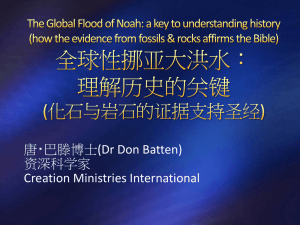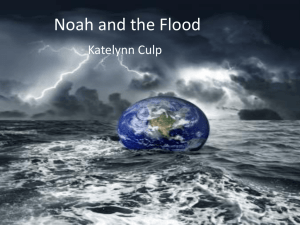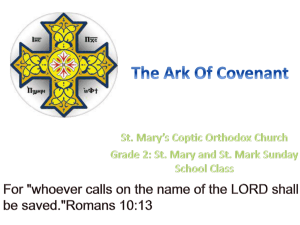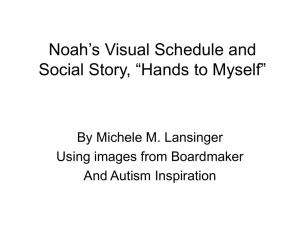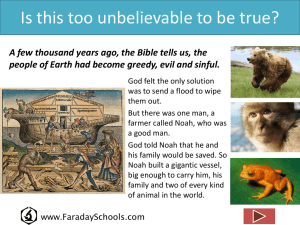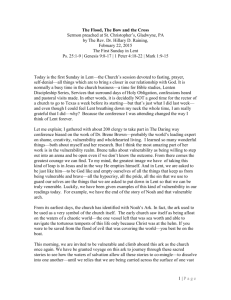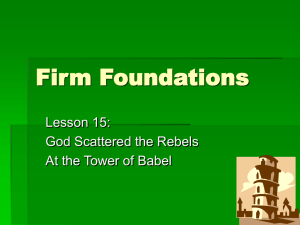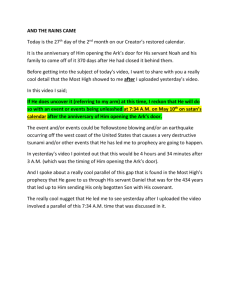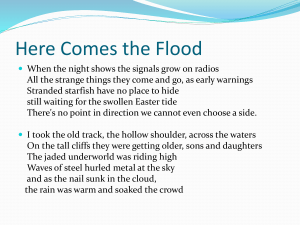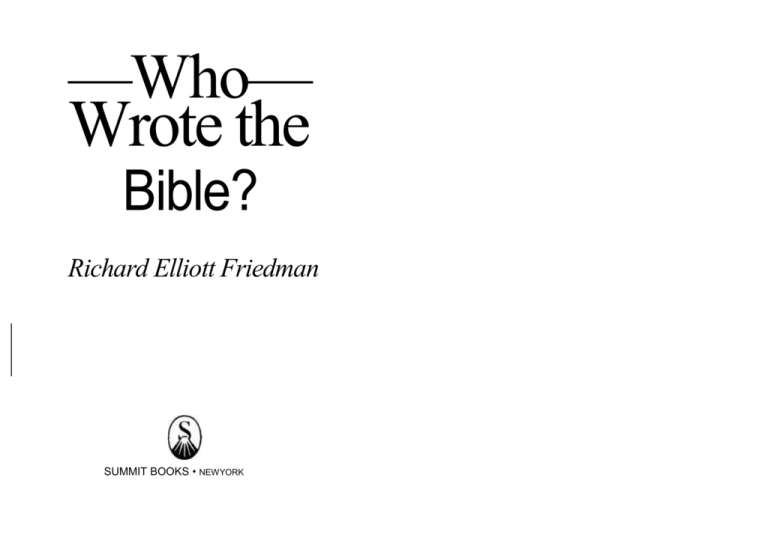
—Who—
Wrote the
Bible?
Richard Elliott Friedman
SUMMIT BOOKS • NEWYORK
This book is dedicated to
Reva A. Friedman and Laraine Friedman Linn,
with love.
Copyright © 1987 by Richard Friedman
All rights reserved
including the right of reproduction
in whole or in part in any form
Published by SUMMIT BOOKS
A Division of Simon & Schuster, Inc.
Simon & Schuster Building
1230 Avenue of the Americas
New York, New York 10020
SUMMIT BOOKS and colophon are trademarks of Simon Si Schuster, Inc.
Designed by Irving Perkins Associates
Map by Ozzie Grief
Manufactured in the United States of America
10 9 8 7 6 5 4 3 2
LIBRARY OF CONGRESS CATALOGING IN PUBLICATION DATA
Friedman, Richard Elliott. Who wrote the Bible?
Bibliography: p.
Includes index.
1. Bible. O.T. Pentateuch—Authorship. 2. Bible.
O.T. Historical boob—Authorship. 3. Bible. O.T.
Pentateuch—Criticism, interpretation, etc. 4. Bible.
O.T. Historical books—Criticism, interpretation, etc. 5.
Documentary hypothesis (Pentateuchal criticism) I. Title.
BS1225.2.F75 1987
222'. 1066
87-1978
ISBN 0-671-63161-6
] and E
CHAPTER 2
J and E
Two Clues Converge
Two and a half thousand years after the events that I described in the last
chapter took place, three investigators of who wrote the Bible each
independently made the same discovery. One was a minister, one was a
physician, and one was a professor. The discovery that they all made
ultimately came down to the combination of two pieces of evidence:
doublets and the names of God. They saw that there were apparently two
versions each of a large number of biblical stories: two accounts of the
creation, two accounts of each of several stories about the patriarchs
Abraham and Jacob, and so on. Then they noticed that, quite often, one
of the two versions of a story would refer to God by one name and the
other version would refer to God by a different name.
In the case of the creation, for example, the first chapter of the Bible
tells one version of how the world came to be created, and the second
chapter of the Bible starts over with a different version of what
happened.1 In many ways they duplicate each other, and on several
points they contradict each other. For example, they de50
51
scribe the same events in different order. In the first version, God creates
plants first, then animals, then man and woman. In the second version,
God creates man first. Then he creates plants. Then, so that the man
should not be alone, God creates animals. And last, after the man does
not find a satisfactory mate among the animals, God creates woman.
And so we have:
Genesis 1
Genesis 2
plants
animals
man &. woman
man
plants
animals
woman
The two stories have two different pictures of what happened. Now,
the three investigators noticed that the first version of the creation story
always refers to the creator as God—thirty-five times. The second
version always refers to him by his name, Yahweh God— eleven times.
The first version never calls him Yahweh; the second version never calls
him God.
Later comes the story of the great flood and Noah's ark, and it, too,
can be separated into two complete versions that sometimes duplicate
each other and sometimes contradict each other.2 And, again, one
version always calls the deity God, and the other version always calls
him Yahweh. There are two versions of the story of the convenant
between the deity and Abraham.' And, once again, in one the deity
introduces himself as Yahweh, and in one he introduces himself as God.
And so on. The investigators saw that they were not simply dealing with
a book that repeated itself a great deal, and they were not dealing with a
loose collection of somewhat similar stories. They had discovered two
separate works that someone had cut up and combined into one.
52
WHO WROTE THE BIBLE?
The Discovery of the Sources
The first of the three persons who made this discovery was a German
minister, Henning Bernhard Witter, in 1711. His book made very little
impact and was in fact forgotten until it was rediscovered two centuries
later, in 1924.
The second person to see it was Jean Astruc, a French professor of
medicine and court physician to Louis XV. He published his findings at
the age of seventy, anonymously in Brussels and secretly in Paris in
1753. His book, too, made very little impression on anyone. Some
belittled it, perhaps partly because it was by a medical doctor and not by
a scholar.
But when a third person, who was a scholar, made the same discovery
and published it in 1780, the world could no longer ignore it. The third
person was Johann Gottfried Eichhorn, a known and respected scholar in
Germany and the son of a pastor. He called the group of biblical stories
that referred to the deity as God "E," because the Hebrew word for God
is El or Elohim. He called the group of stories that referred to the deity
as Yahweh "J" (which in German is pronounced like English Y).
The idea that the Bible's early history was a combination of two
originally separate works by two different people lasted only eighteen
years. Practically before anyone had a chance to consider the implications of this idea for the Bible and religion, investigators discovered
that the first five books of the Bible were not, in fact, even by two
writers—they were by four.
They discovered that E was not one but two sources. The two had
looked like only one because they both called the deity Elohim, not
Yahweh. But the investigators now noticed that within the group of
stories that called the deity Elohim there were still doublets. There were
also differences of style, differences of language, and differences of
interests. In short, the same kinds of evidence that had led to the
discovery of J and E now led to the discovery of a third source that had
been hidden within E. The differences of interests were intriguing. This
third set of stories seemed to be particularly interested in priests. It
contained stories about priests, laws about priests, matters
J and E
53
of ritual, sacrifice, incense-burning, and purity, and concern with dates,
numbers, and measurements. This source therefore came to be known as
the Priestly source—for short, P.
The sources J, E, and P were found to flow through the first four of the
five Books of Moses: Genesis, Exodus, Leviticus, and Numbers.
However, there was hardly a trace of them in the fifth book,
Deuteronomy, except for a few lines in the last chapters. Deuteronomy is
written in an entirely different style from those of the other four books.
The differences are obvious even in translation. The vocabulary is
different. There are different recurring expressions and favorite phrases.
There are doublets of whole sections of the first four books. There are
blatant contradictions of detail between it and the others. Even part of the
wording of the Ten Commandments is different. Deuteronomy appeared
to be independent, a fourth source. It was called D.
The discovery that the Torah of Moses was really four works that had
once been separate was not necessarily a crisis in itself. After all, the
New Testament also began with four Gospels—Matthew, Mark, Luke,
and John—each of which told the story in its own way. Why then was
there such a hostile reaction, among Christians and Jews, to the idea that
the Old Testament (or Hebrew Bible) might begin with four "gospels" as
well? The difference was that the Hebrew Bible's four sources had been
combined so intricately and accepted as Moses* own writing for so long,
about two thousand years; the new discoveries were flying in the face of
an old, accepted, sacred tradition. The biblical investigators were
unraveling a finely woven garment, and no one knew where these new
investigations would lead.
The Story of Noah—Twice
These first books of the Bible had as extraordinary a manner of
composition as any book on earth. Imagine assigning four different
people to write a book on the same subject, then taking their four
different versions and cutting them up and combining them into one
long, continuous account, then claiming that the account was all by
WHO WROTE THE BIBLE?
54
one person. Then imagine giving the book to detectives and
leaving them to figure out (1) that the book was not by one person,
(2) that it was by four, (3) who the four were, and (4) who combined
them. For those readers who want to get a better sense of how this
looks, I have translated the biblical story of Noah's ark, as it appears in
Genesis, with its two sources printed in two different kinds of type.
The flood story is a combination of the J source and the P source. J
is printed here in regular type, and P is printed in boldface capitals.
If you read either source from beginning to end, and then go back and
read the other one, you will be able to see for yourself two complete,
continuous accounts, each with its own vocabulary and concerns:
J and E
55
13
AND GOD SAID TO NOAH, "THE END OF ALL FLESH HAS COME
BEFORE ME, FOR THE EARTH IS FILLED WITH VIOLENCE BECAUSE OF
THEM, AND HERE I AM GOING TO DESTROY THEM WITH THE EARTH.
14 MAKE YOURSELF AN ARK OF GOPHER WOOD, MAKE ROOMS WITH
THE ARK, AND PITCH IT OUTSIDE AND INSIDE WITH PITCH.
15 AND THIS IS HOW YOU SHALL MAKE IT: THREE HUNDRED
CUBITS THE LENGTH OF THE ARK, FIFTY CUBITS ITS WIDTH, AND
THIRTY CUBITS ITS HEIGHT.
16 YOU SHALL MAKE A WINDOW FOR THE ARK, AND YOU SHALL
FINISH IT TO A CUBIT FROM THE TOP, AND YOU SHALL MAKE AN ENTRANCE TO THE ARK IN ITS SIDE. YOU SHALL MAKE LOWER, SECOND,
AND THIRD STORIES FOR IT.
17
The Flood—Genesis 6:5-8:22
(Priestly text in boldface capitals, J text in regular type)
GENESIS 6:
5 And Yahweh saw that the evil of humans was great in the earth, and all
the inclination of the thoughts of their heart was only evil all the day.
6 And Yahweh regretted that he had made humans in the earth, and he
was grieved to his heart.
7 And Yahweh said, "I shall wipe out the humans which I have created
from the face of the earth, from human to beast to creeping thing to bird of
the heavens, for I regret that I have made them."
8 But Noah found favor in Yahweh's eyes.
9
THESE ARE THE GENERATIONS OF NOAH: NOAH WAS A RIGHTEOUS
MAN, PERFECT IN HIS GENERATIONS. NOAH WALKED WITH
GOD.
10
11
AND NOAH SIRED THREE SONS : SHEM, HAM, AND JAPHETH.
AND THE EARTH WAS CORRUPTED BEFORE GOD, AND THE EARTH
WAS FILLED WITH VIOLENCE.
12
AND GOD SAW THE EARTH, AND HERE IT WAS CORRUPTED, FOR ALL
FLESH HAD CORRUPTED ITS WAY ON THE EARTH.
AND HERE I AM BRINGING THE FLOOD, WATER OVER THE
EARTH, TO DESTROY ALL FLESH IN WHICH IS THE BREATH OF LIFE
FROM UNDER THE HEAVENS. EVERYTHING WHICH IS ON THE LAND
WILL DIE.
18 AND I SHALL ESTABLISH MY COVENANT WITH YOU. AND YOU
SHALL COME TO THE ARK, YOU AND YOUR SONS AND YOUR WIFE AND
YOUR SONS’ WIVES WITH YOU.
19 AND OF ALL THE LIVING, OF ALL FLESH, YOU SHALL BRING TWO
TO THE ARK TO KEEP ALIVE WITH YOU, THEY SHALL BE MALE AND
FEMALE.
20 OF THE BIRDS ACCORDING TO THEIR KIND, AND OF THE
BEASTS ACCORDING TO THEIR KIND, AND OF ALL THE CREEPING
THINGS OF THE EARTH ACCORDING TO THEIR KIND, TWO OF EACH
WILL COME TO YOU TO KEEP ALIVE.
21
AND YOU, TAKE FOR YOURSELF OF ALL FOOD WHICH WILL BE
EATEN AND GATHER IT TO YOU, AND IT WILL BE FOR YOU AND FOR
THEM FOR FOOD."
22 AND NOAH DID ACCORDING TO ALL THAT GOD COMMANDED
HIM—SO HE DID.
GENESIS 7:
1 And Yahweh said to Noah, "Come, you and all your household,
to the ark, for 1 have seen you as righteous before me in this generation.
2 Of all the clean beasts, take yourself seven pairs, man and his
56
J and E
WHO WROTE THE BIBLE?
woman ; and of the beasts which are not clean, two, man and his
woman.
3 Also of the birds of the heavens seven pairs, male and female, to
keep alive seed on the face of the earth.
4 For in seven more days I shall rain on the earth forty days and
forty nights, and I shall wipe out all the substance that I have made
from upon the face of the earth."
5 And Noah did according to all that Yahweh had commanded
him.
6 AND NOAH WAS SIX HUNDRED YEARS OLD, AND THE FLOOD
WAS ON THE EARTH.
7 And Noah and his sons and his wife and his sons' wives with him
came to the ark from before the waters of the flood.
8 OF THE CLEAN BEASTS AND OF THE BEASTS WHICH WERE
NOT CLEAN, AND OF THE BIRDS AND OF ALL THOSE WHICH
CREEP UPON THE EARTH,
9 TWO OF EACH CAME TO NOAH TO THE ARK, MALE AND
FEMALE, AS GOD HAD COMMANDED NOAH.
10 And seven days later the waters of the flood were on the earth.
11 IN THE SIX HUNDREDTH YEAR OF NOAH'S LIFE, IN THE
SECOND MONTH, IN THE SEVENTEENTH DAY OF THE MONTH,
ON THIS DAY ALL THE FOUNTAINS OF THE GREAT DEEP WERE
BROKEN UP, AND THE WINDOWS OF THE HEAVENS WERE
OPENED.
12 And there was rain on the earth, forty days and forty nights.
13 IN THIS VERY DAY, NOAH AND SHEM, HAM, AND JAPHETH,
THE SONS OF NOAH, AND NOAH'S WIFE AND HIS SONS' THREE
WIVES WITH THEM CAME TO THE ARK,
14 THEY AND ALL THE LIVING THINGS ACCORDING TO THEIR
KIND, AND ALL THE BEASTS ACCORDING TO THEIR KIND, AND
ALL THE CREEPING THINGS THAT CREEP ON THE EARTH
ACCORDING TO THEIR KIND, AND ALL THE BIRDS ACCORDING
TO THEIR KIND, AND EVERY WINGED BIRD.
15 AND THEY CAME TO NOAH TO THE ARK, TWO OF EACH, OF
ALL FLESH IN WHICH IS THE BREATH OF LIFE.
16 AND THOSE WHICH CAME WERE MALE AND FEMALE, SOME
OF ALL FLESH CAME, AS GOD HAD COMMANDED HIM. And Yahweh closed it
for him.
57
17 And the flood was on the earth for forty days and forty nights,
and the waters multiplied and raised the ark, and it was lifted from
the earth.
18 And the waters grew strong and multiplied greatly on the earth,
and the ark went on the surface of the waters.
19 And the waters grew very very strong on the earth, and they
covered all the high mountains that are under all the heavens.
20 Fifteen cubits above, the waters grew stronger, and they covered the mountains.
21 AND ALL FLESH, THOSE THAT CREEP ON THE EARTH, THE
BIRDS, THE BEASTS, AND THE WILD ANIMALS, AND ALL THE
SWARMING THINGS THAT SWARM ON THE EARTH, AND ALL
THE HUMANS EXPIRED.
22 Everything that had the breathing spirit of life in its nostrils,
everything that was on the dry ground, died.
23 And he wiped out all the substance that was on the face of the
earth, from human to beast, to creeping thing, and to bird of the
heavens, and they were wiped out from the earth, and only Noah
and those who were with him in the ark were left.
24 AND THE WATERS GREW STRONG ON THE EARTH A
HUNDRED FIFTY DAYS.
GENESIS 8:
1 AND GOD REMEMBERED NOAH AND ALL THE LIVING, AND
ALL THE BEASTS THAT WERE WITH HIM IN THE ARK, AND GOD
PASSED A WIND OVER THE EARTH, AND THE WATERS WERE
DECREASED.
2 AND THE FOUNTAINS OF THE DEEP AND THE WINDOWS OF
THE HEAVENS WERE SHUT, and the rain was restrained from the heavens.
3 And the waters receded from the earth continually, AND THE
WATERS WERE ABATED AT THE END OF A HUNDRED FIFTY DAYS.
4 AND THE ARK RESTED, IN THE SEVENTH MONTH, IN THE
SEVENTEENTH DAY OF THE MONTH, ON THE MOUNTAINS OF ARARAT.
5 AND THE WATERS CONTINUED RECEDING UNTIL THE
TENTH MONTH; IN THE TENTH MONTH, ON THE FIRST OF THE
MONTH, THE TOPS OF THE MOUNTAINS APPEARED.
6 And it was at the end of forty days, and Noah opened the window of the ark which he had made.
58
7
WHO WROTE THE BIBLE?
AND HE SENT OUT A RAVEN, AND IT WENT BACK AND FORTH UNTIL
THE WATERS DRIED UP FROM THE EARTH.
8 And he sent out a dove from him to see whether the waters had
eased from the face of the earth.
9 And the dove did not find a resting place for its foot, and it returned
to him to the ark, for waters were on the face of the earth, and he put out
his hand and took it and brought it to him to the ark.
J and E
59
21 And Yahweh smelled the pleasant smell, and Yahweh said to his
heart, "1 shall not again curse the ground on man's account, for the
inclination of the human heart is evil from their youth, and I shall not
again strike all the living as I have done.
22 All the rest of the days of the earth, seed and harvest, and cold and
heat, and summer and winter, and day and night shall not cease."
10 And he waited seven more days, and he again sent out a dove from
the ark.
11 And the dove came to him at evening time, and here was an olive
leaf torn off in its mouth, and Noah knew that the waters had eased from
the earth.
12 And he waited seven more days, and he sent out a dove, and it did
not return to him ever again.
13 AND IT WAS IN THE six HUNDRED AND FIRST YEAR, IN THE
FIRST MONTH, ON THE FIRST OF THE MONTH, THE WATERS DRIED
FROM THE EARTH. And Noah turned back the covering of the ark and
looked, and here the face of the earth had dried.
14 AND IN THE SECOND MONTH, ON THE TWENTY-SEVENTH
DAY OF THE MONTH, THE EARTH DRIED UP.
AND GOD SPOKE TO NOAH, SAYING,
16 "GO OUT FROM THE ARK, YOU AND YOUR WIFE AND YOUR
SONS' WIVES WITH YOU.
17 ALL THE LIVING THINGS THAT ARE WITH YOU, OF ALL
FLESH, OF THE BIRDS, AND OF THE BEASTS, AND OF ALL THE
CREEPING THINGS THAT CREEP ON THE EARTH, THAT GO OUT
WITH YOU, SHALL SWARM IN THE EARTH AND BE FRUITFUL
15
AND MULTIPLY IN THE EARTH."
18 AND NOAH AND HIS SONS AND HIS WIFE AND HIS SONS'
WIVES WENT OUT.
19 ALL THE LIVING THINGS, ALL THE CREEPING THINGS AND ALL
THE BIRDS, ALL THAT CREEP ON THE EARTH, BY THEIR FAMILIES,
THEY WENT OUT OF THE ARK.
20 And Noah built an altar to Yahweh, and he took some of each of
the clean beasts and of each of the clean birds, and he offered sacrifices
on the altar.
Each in Its Own Words
The very fact that it is possible to separate out two continuous stories
like this is remarkable itself, and it is strong evidence for the hypothesis.
One need only try to do the same thing with any other book to see how
impressive this phenomenon is.
But it is not only that it is possible to carve out two stories. What
makes the case so powerful is that each story consistently uses its own
language. The P story (the one in boldface) consistently refers to the
deity as God. The J story always uses the name Yahweh. P refers to the
sex of the animals with the words "male and female" (Gen 6:19; 7:9,16).
J uses the terms "man and his woman" (7:2) as well as male and female.
P says that everything "expired" (6:17; 7:21). J says that everything
"died" (7:22).
The two versions do not just differ on terminology. They differ on
actual details of the story. P has one pair of each kind of animal. J has
seven pairs of clean animals and one pair of unclean animals. ("Clean"
means fit for sacrifice. Sheep are clean; lions are unclean.) P pictures the
flood as lasting a year (370 days). J says it was forty days and forty
nights. P has Noah send out a raven. J says a dove. P obviously has a
concern for ages, dates, and measurements in cubits. J does not.
Probably the most remarkable difference of all between the two is
their different ways of picturing God. It is not just that they call the deity
by different names. J pictures a deity who can regret things that he has
done (6:6,7), which raises interesting theological questions, such as
whether an all-powerful, all-knowing being would ever regret past
actions. It pictures a deity who can be "grieved to his
60
WHO WROTE THE BIBLE?
J andE
61
heart" (6:6), who personally closes the ark (7:16) and smells Noah's
sacrifice (8:21). This anthropomorphic quality of J is virtually entirely
lacking in P. There God is regarded more as a transcendent controller of
the universe.
The two flood stories are separable and complete. Each has its own
language, its own details, and even its own conception of God. And even
that is not the whole picture. The J flood story's language, details, and
conception of God are consistent with the language, details, and
conception of God in other J stories. The P flood story is consistent with
other P stories. And so on. The investigators found each of the sources to
be a consistent collection of stories, poems, and laws.
live? What was their purpose? Did they know each other's work? Did
any of them know that they were writing a Bible, a work to be held as
sacred and authoritative? And the mysterious redactor": was it one
person, or were there several? Who were they? Why did they combine
the documents in this complex way? The answers were buried in the
pages of the Bible and in the soil of the Middle East. By digging into
both, my predecessors and I found out how the stories in those pages
were connected with that world.
Two Countries, Two Writers
The Doorstep
The discovery that there were four separate, internally consistent
documents came to be known as the Documentary Hypothesis. The
process was also called "Higher Criticism." 4 What had begun as an idea
by three men of the eighteenth century came to dominate investigations
of the Bible by the end of the nineteenth century.
It had taken centuries of collecting clues to arrive at this stage which
one could regard as fairly advanced or really quite minimal, depending
on one's point of view. On the one hand, for centuries no one could
easily challenge the accepted tradition that Moses was the author of the
Five Books, and now people of acknowledged piety could say and write
openly that he was not. They were able to identify at least four hands
writing in the first five books of the Bible. Also, there was the hand of an
extremely skillful collector known as a redactor, someone who was
capable of combining and organizing these separate documents into a
single work that was united enough to be readable as a continuous
narrative.
On the other hand, what these detectives of biblical origins had
arrived at was only the doorstep. They were able to see that a puzzle
existed, and they were able to begin to get an idea of how complex the
puzzle was going to be. True, they could identify four documents and a
redactor, but who wrote those documents? When did they
The first two sources, J and E, were written by two persons who lived
during the period that I described in the last chapter. They were tied to
the life of that period, its major events, its politics, its religion, and its
catastrophes. In this chapter I intend to demonstrate this and to identify
the persons who wrote them.
First, the author of J came from Judah and the author of E came from
Israel. A number of biblical scholars before me have suggested this, but
what is new here is that I mean to present a stronger collection of
evidence for this than has been made known before, I mean to be more
specific about who the two writers were, and I mean to show more
specifically how the biblical stories actually related to these two men
and to the events of their world.
The mere fact that different stories in the first books of the Bible call
God by different names of course proves nothing in itself. Someone
could write about the queen of England and sometimes call her the
queen and sometimes call her Elizabeth II. But, as I have said, there was
something more suspicious about the way the different names of the
deity lined up in the first few books of the Bible. The two different
names, Yahweh and Elohim, seemed to line up consistently in each of
the two versions of the same stories in the doublets. If we separate the
Elohim (E) stories from the Yahweh (J) stories, we get a consistent
series of clues that the E stories were written by someone concerned
with Israel and the J stories by someone concerned with Judah.5

